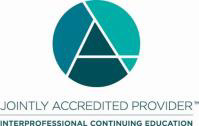WMJ Vol 120: Prevention of Neonatal Hypoglycemia with Oral Glucose Gel for High-Risk Newborns
ABSTRACT
Background: Neonatal hypoglycemia (glucose <47) is the most common metabolic problem in newborns (incidence 5% – 15%) and can cause adverse outcomes, even in the absence of noticeable symptoms. Oral glucose gel (OGG) is safe and effective for treatment of neonatal hypoglycemia. In order to reduce interventions such as intravenous (IV) dextrose administration and neonatal intensive care unit (NICU) transfer, in October 2017, we implemented a protocol in our Level 1 rural community hospital to identify newborns with asymptomatic hypoglycemia based on risk factors and treat them with OGG. Risk factors include large or small size for gestational age, maternal gestational diabetes, preterm and late preterm birth, and newborns requiring resuscitation.
Methods: Chart review was performed for all infants born at our hospital from October 1, 2016 through September 30, 2018. Data for year 1—the period before protocol implementation (October 2016- September 2017)—was compared to post implementation data from year 2 (October 2017-September 2018).
Results: There was a significant risk reduction in newborns requiring interventions due to hypoglycemia after protocol implementation (P = 0.029, Student t test). In year one, 7 of 310 total newborns required IV dextrose or NICU transfer related to neonatal hypoglycemia. In year two, 108 out of 250 total newborns were tested for asymptomatic hypoglycemia based on risk factors identified in the protocol. Of those tested, 31 newborns demonstrated hypoglycemia and received OGG. None of the 250 newborns required further associated interventions.
Conclusion: Protocol-based hypoglycemia testing based on risk factors with subsequent OGG administration was effective in reducing the need for IV dextrose and NICU transfer from our Level 1 rural community hospital.
Intended Audience
The target audience for this journal-based activity is healthcare providers caring for the people and communities of Wisconsin and beyond.
Learning Objectives
As a result of this journal-based activity, the healthcare team will be able to:
- Describe the known risk factors for neonatal hypoglycemia.
- Identify opportunities to implement a hypoglycemia prevention program.
- Create a hospital-based neonatal hypoglycemia prevention process focusing on at-risk patients.
FACULTY DISCLOSURE
It is the policy of the University of Wisconsin–Madison Interprofessional Continuing Education Partnership (ICEP) to identify, mitigate and disclose all relevant financial relationships with ineligible companies* held by the speakers/presenters, authors, planners, and other persons who may influence content of this accredited continuing education (CE). In addition, speakers, presenters and authors must disclose any planned discussion of unlabeled/unapproved uses of drugs or devices during their presentation.
For this accredited continuing education activity all relevant financial relationships have been mitigated and detailed disclosures are listed below.
| Name of Individual | Individual's Role in Activity | Name of Commercial Interest & | Discussion of |
| Christina Andrist, DO | Author | No relevant relationships with ineligible companies to disclose | No |
| Terese Bailey, BS | Accreditation Specialist | No relevant relationships with ineligible companies to disclose | No |
| Matthew Cabrera Svendsen, MD | Author | No relevant relationships with ineligible companies to disclose | No |
| Mark Deyo-Svendsen, MD | Author | No relevant relationships with ineligible companies to disclose | No |
| Lee Dresang, MD | Reviewer | No relevant relationships with ineligible companies to disclose | No |
| David Dwyer, PhD, RN, NE-BC | Reviewer | No relevant relationships with ineligible companies to disclose | No |
| Danielle Gindlesberger, MD | Reviewer | No relevant relationships with ineligible companies to disclose | No |
| Sara Herrmann, MD | Author | No relevant relationships with ineligible companies to disclose | No |
| Rachel Oldfather, MD | Author | No relevant relationships with ineligible companies to disclose | No |
| Michael Phillips, MD | Author | No relevant relationships with ineligible companies to disclose | No |
| Sarina Schrager, MD, MS | Editor | No relevant relationships with ineligible companies to disclose | No |
*Ineligible companies are those whose primary business is producing, marketing, selling, re-selling, or distributing healthcare products used by or on, patients.
The ACCME does not consider providers of clinical services directly to patients to be ineligible companies.
Accreditation
Accreditation Statement
 | In support of improving patient care, this activity has been planned and implemented by the University of Wisconsin–Madison ICEP and the Wisconsin Medical Journal. The University of Wisconsin–Madison ICEP is jointly accredited by the Accreditation Council for Continuing Medical Education (ACCME), the Accreditation Council for Pharmacy Education (ACPE), and the American Nurses Credentialing Center (ANCC), to provide continuing education for the healthcare team. |
Credit Designation Statements
American Medical Association (AMA)
The University of Wisconsin–Madison ICEP designates this journal-based CE activity for a maximum of 1.0 AMA PRA Category 1 Credit™. Physicians should claim only the credit commensurate with the extent of their participation in the activity.
Continuing Education Units
The University of Wisconsin–Madison ICEP, as a member of the University Professional & Continuing Education Association (UPCEA), authorizes this program for 0.1 continuing education units (CEUs) or 1 hour.
Available Credit
- 1.00 AMA PRA Category 1 Credit™
- 1.00 University of Wisconsin–Madison Continuing Education Hours
- 1.00 Approved for AMA PRA Category 1 Credit™
Required Hardware/software
Free, current version of Chrome, Firefox, Safari, or Edge. Some older browsers and Microsoft Internet Explorer could produce error messages or not display the content correctly.
Free, current version of Adobe Acrobat Reader or other .pdf reader.

 Facebook
Facebook X
X LinkedIn
LinkedIn Forward
Forward